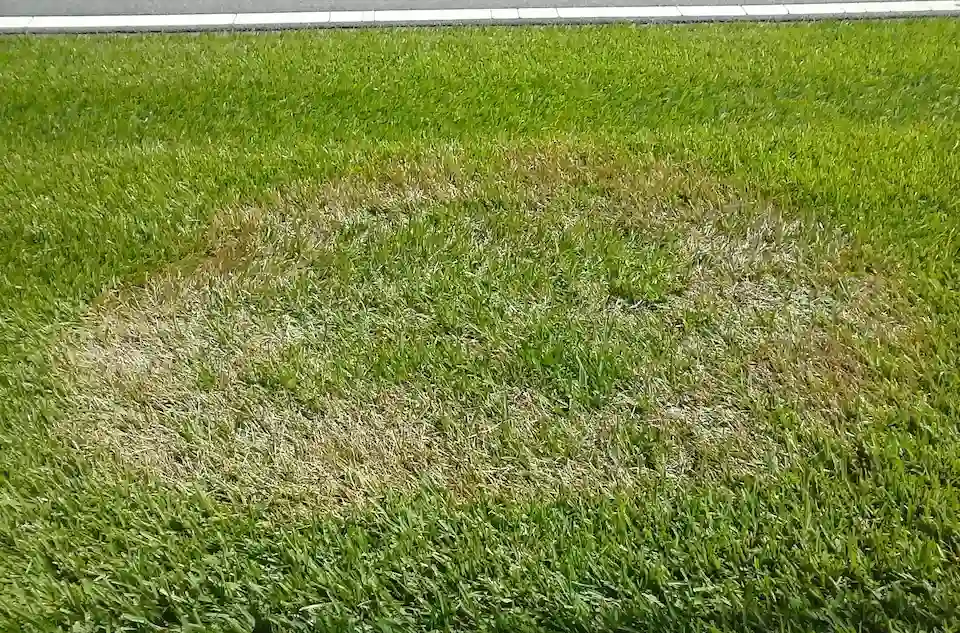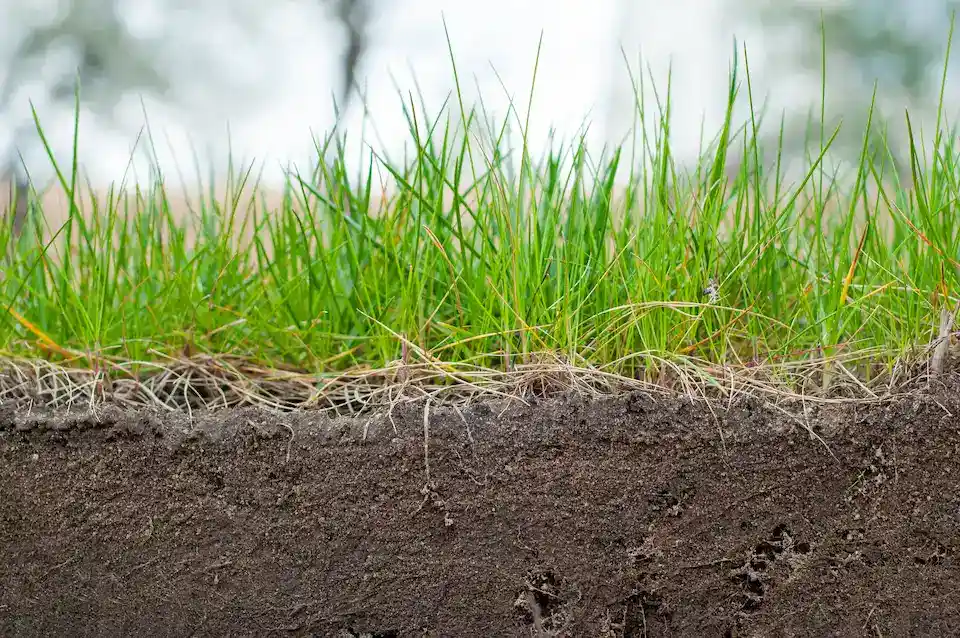Brown Patches in Lawn: Understanding and Addressing Brown Patch Disease
Everyone wants a plush, green lawn, so when you notice brown patches, that’s a red flag that something is wrong. Many factors can cause your lawn to turn brown. Understanding the problem and pinpointing the cause is important to treat it and maintain a healthy lawn.
If brown patches are invading your lawn, Turf TitanZ is here to help. Our Wake Forest lawn fertilization team will explain what may be causing these brown patches and the steps you can take for treatment and prevention.

What is Brown Patch Disease?
The fungus Rhizoctonia causes brown patch disease. Signs of brown patch disease include patches of dead brown grass in hot and humid weather. These typically appear in mid-to-late summer.
If your lawn has brown patch disease, you’ll notice yellowish-brown irregular circular patches in your lawn. They are typically accompanied by a smoke ring border. While the grass within the smoke ring border thins out, it can sometimes get killed off entirely.
Understanding the Causes of Brown Patch Disease
Environmental Factors
Soil quality can be a leading contributor to brown patch disease. Poor soil quality, such as compacted or nutrient soil can impair the root system and make your lawn prone to insects and disease. The pH levels may also be off and not adequate for your grass.
You also have to consider pets. Dog urine can leave brown spots behind due to the high amount of nitrogen and salts it contains. These dog urine burns can wreak havoc on your lawn.
Excessive Moisture
Overwatering and watering your grass at night can also leave lingering moisture. This can cause brown patches to spread.
Poor Air Circulation
Grass not only needs water to grow but also air and nutrients. When there is poor air circulation, it can lead to a brown lawn.
Identifying Brown Patch Disease Symptoms
Brown patch disease is pretty easy to notice on your lawn. The following are all red flags that it’s time to take action:
Brown Spots and Discoloration
Brown patch symptoms can lead to light brown circular patches that can range in size from a few inches to several feet in diameter.
Irregular Shaped Patches of Dead Grass
You may notice patches of dead, tan grass that are sunken in. They can measure up to 3 feet in diameter and expand up to 20 feet wide. Brown patch in tall fescue, you might see irregular tan or light brown lesions surrounded by dark brown borders.

Fuzzy White or Gray Spots on Grass Blades
When you look at your grass in the early morning, you may see white mycelium on and between grass leaves.
Prevention and Management of Brown Patch Disease
The good news about brown patch disease is that it can be treated and prevented.
Proper Lawn Maintenance Practices
The way you’re mowing your grass can lead to brown patch disease. Dull blades will shred and damage your lawn. If your lawn mower is leaking, you can also cause a chemical burn. Gas and oil leaks can lead to brown patches overnight. You can fix this issue by making sure you never overfill the fuel tank and by not refilling the tank on your lawn. Also, sharpen the blades and readjust the lawn mower to the correct height.
Regular Mowing and Proper Height
You have to find the right mowing schedule so that your grass is the right height. You don’t want to cut it too short, but you also don’t want it to grow too high that the sun is penetrating the surface and moving heat and moisture away. Keep your mower higher about 1/2 inch than normal during the summer to prevent this problem.
Adequate Watering Techniques
Water your lawn either early in the morning or between 4 p.m. to 6 p.m. to ensure that the grass dries out before nightfall. If your grass is wet all night, it can become more prone to disease and pests.
Appropriate Fertilization and Soil Aeration
You don’t want to fertilize your lawn when it’s hot and humid. You also want to choose a fertilizer with the right NPK value. NPK refers to the proportions of nitrogen, phosphorus, and potassium in the fertilizer.
Improving air circulation can also help to prevent brown patch disease. Aerating your lawn and dethatching will reduce humidity. When you aerate and dethatch, the grassroots can access water, air, and nutrients they need.
Disease-Resistant Grass Varieties
You can help to reduce brown patches on your lawn by planting disease-resistant varieties and seed mixtures. Look for heat-tolerant Kentucky bluegrass.
Fungicide Treatment Options
There are different fungicide treatment options to treat brown patches, these include:
Organic and Natural Fungicides
There are some organic and natural fungicides to treat your own. Look for the active ingredient bacillus amyloliquefaciens strain D747. Most of these types of products will be OMRI certified, meaning they can be used in organic production.
Chemical Fungicides and Professional Treatments
When you need chemical fungicides, it’s best to let the professionals handle it. You don’t want to choose the wrong chemicals and make matters worse. The lawn care professionals at Turf TitanZ can help to treat your lawn and get rid of brown patch fungus.
Repairing and Restoring Your Lawn
Reseeding and Overseeding Techniques
If you’ve tried many methods and nothing is working, it may be time to start thinking about reseeding with a turfgrass variety that is fungus resistant. Many grasses are available with moderate resistance to the Rhizoctonia fungus. The lawn professionals at Turf TitanZ can recommend the best types of grasses when it comes to reseeding and overseeding.
Soil Testing and pH Adjustment
Have the soil tested to check the pH level. Your lawn may be more prone to disease if the soil pH is less than 6.0. It’s also advised to keep the soil potassium and calcium levels at the upper end of any sufficient ratings on soil tests.
Proper Lawn Irrigation and Drainage
Be sure to water your lawn on schedule so that it is getting the right amount of water. Most grasses need 1 to 1½ inches of water per week, including rainfall. If you water your lawn for 20 minutes three times a week, it should be sufficient. You want to be sure you are watering it at the right times of the day so that it has time to thoroughly dry before nightfall and not remain too moist.
Regain a Lush, Healthy Lawn With the Lawn Care Professionals at Turf TitanZ
At Turf TitanZ, we are committed to helping you have a lawn that will be the envy of the neighborhood. If you notice small brown patches on your lawn or large circular brown patches, call us so we can take a look and recommend the best course of action. Our landscaping services will help you regain the lush, healthy lawn you want. Call us today at (919) 562-0771 to schedule an appointment!
